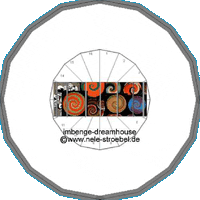|
In the construction of a post-Apartheid society, they also reflect, as exhibits in South African museums, both the revision and rewriting of an art history that had been in denial for decades and the abolition of hierarchies. Presented in juxtaposition with works by world-famous artists, they signalise the equality of work by artists formed by Western urban society and that created by people who, under Apartheid, were denied access to education, international careers and often even to basic materials.
Moreover, telephone wires symbolise in southern Africa a readiness to communicate with what is new and foreign as well as the ability to be receptive to something that is at first unfamiliar. How creative the local take on global phenomena is shows up most clearly in works done in this material. Indeed they furnish striking proof that variety and diversity need not be forced to yield to a levelling off and dumbing-down that suppress individual identity. On the contrary, they demonstrate that fascinating and distinctive new phenomena can emerge from relevant involvement with what is topical.
Telephone wires are definitely not just a symbol for issues arising from the dramatic social upheavals going on in South Africa but just as unmistakably stand for our own society and indeed the whole Western world. After all, telephone cable as a material on the whole raises, in an era in which it is being increasingly replaced by optical fibre and other state-of-the-art technologies, questions of the gradual but continuous growth from old structures, of transitions from the industrial to the information society, from the machine age to the media age. Telephone wire, therefore, often evokes both regional and global upheavals as well as the increasing ephemeral nature of modern phenomena.
Telephone wires stand for a networking world. On the other hand, how and where is this taking place? If it is limited to the plane of communications technology and to the economic sphere, people are only seemingly and conditionally coming closer together. Isn't it more important to push ahead with this networking on other essential planes as well?
The 'imbenge-dreamhouse' project, with participants from several continents whose backgrounds and ways of seeing themselves differ very widely, represents such an attempt at state-of-the-art global networking. Based on reciprocal readiness to communicate, it dealt with the numerous opportunities that grow out of that stance as well as the difficulties it causes and ultimately showed that sincere dialogues accomplish far more than monologic expression of 'combative convictions' does.
Dr. Stefan Eisenhofer
State Museum for Ethnology, Munich
Head of the Africa section
|

